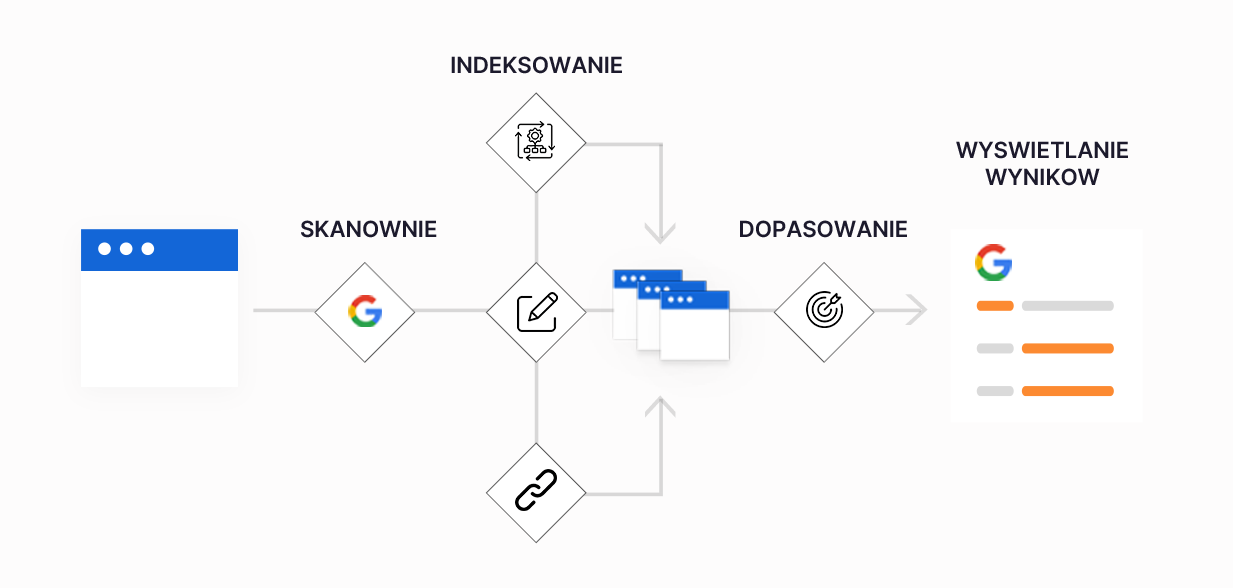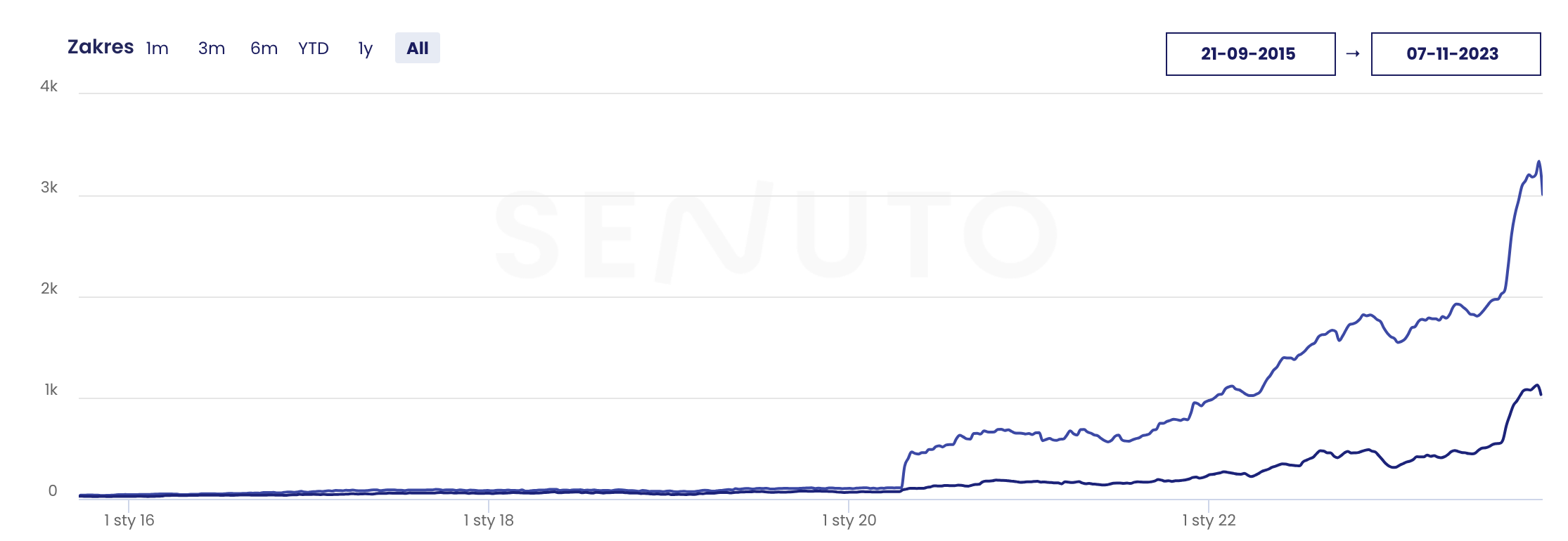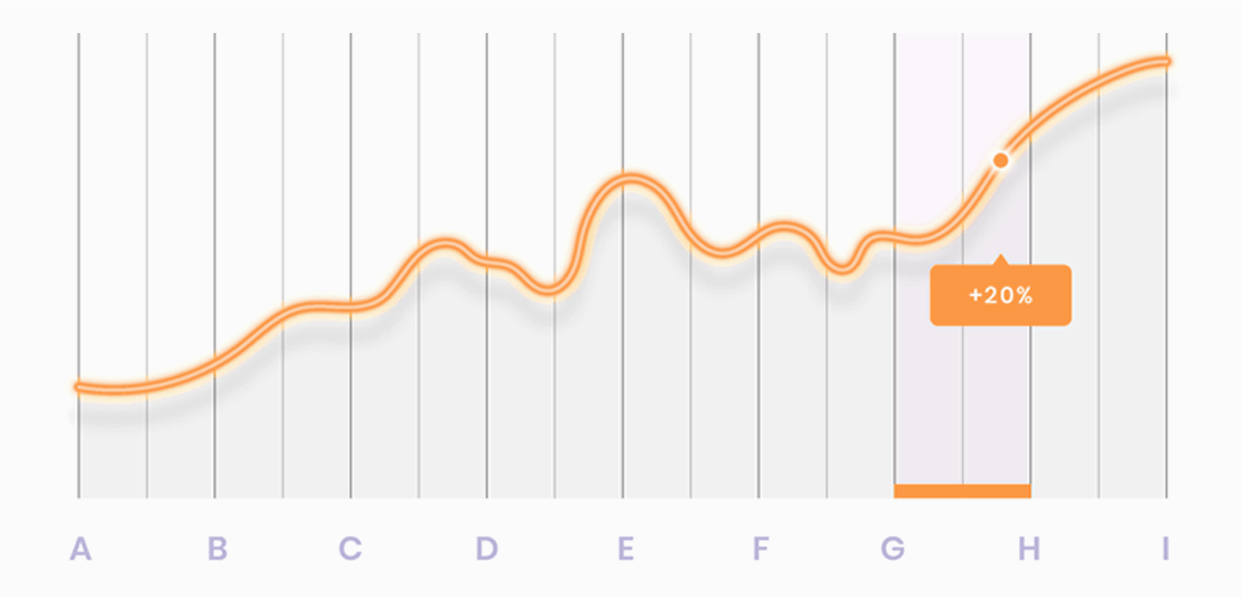Web positioning involves optimizing and customizing a website to meet Google's search engine requirements in order to achieve a better position in search results.
What is Positioning?
Web positioning is a process that involves all activities aimed at achieving the highest possible position of a website in search results when a specific phrase is typed in. Positioning is closely related to optimization, as it allows content, links and other elements of a website to be adjusted to make it more visible to search engine robots. SEO activities, link building, content marketing and web analytics are all part of the SEO process.
Website positioning is a lengthy process, and the first results may only be visible after a few months. However, investing in effective SEO can bring many benefits, such as greater reach and brand recognition. It is worth enlisting the help of a professional SEO agency to help you achieve a high position in search results.
Website positioning is extremely important because most people use search engines such as Google to find information, products and services online. If your website is not visible in search results, potential customers will not be able to find it. Therefore, it is important that your website is positioned effectively to increase its visibility and attract more potential customers.
Although there are several ways to position a website yourself, effective SEO requires knowledge, experience and time. If you don't have the right skills and tools, it can be difficult to achieve high results. That's why many companies choose to use SEO agencies that specialize in positioning websites and online stores.
SEO Achievements for Our Clients
More positioned words in the top3
More positioned words in the top10
Growth in sales from the organic channel
More sessions initiated with Google
How does the SEO process work with semguru? Check out our workflow
Our SEO agency takes SEO strategies to a whole new level, focusing on strategic SEO that translates into real business results. Our goal is to achieve exceptional ROI for our clients. This we achieve by carefully directing the interest of potential users to carefully selected content, which ensures their engagement and guides them through all stages of the AIDA model - from awareness to action. The key here is precise keyword selection, which is not random, but the result of in-depth modeling of potential customers' interests. We don't stop at one-time success - our activities include continuous analysis and monitoring of our clients' site optimization, as well as active observation of competitors' activities. As a result, our strategies not only enable you to gain high positions in search results, but also ensure their long-term maintenance. Our approach is an investment in the future of your brand in the digital world.
-
Analytical stage
At our SEO agency, we start with a meticulous analysis of your business. We learn about your goals and needs, and get to know your website and identify issues affecting performance. We use this knowledge to develop a comprehensive SEO strategy that includes both on-page and off-page optimization. We complete the entire process based on irrefutable data, which allows us to stay ahead of the competition and increase your visibility in search engines.
-
Design stage
In the SEO process, we emphasize the development of a keyword matrix according to the AIDA model. We select keywords according to the user's purchase intent - from building awareness to encouraging purchase. We use data analysis to create a consistent content plan. Once the keyword matrix is prepared, we move on to content optimization, site structure and link building activities.
-
Executive stage
At the execution stage, our SEO agency implements practical solutions to increase the client's visibility in search engines. We focus on on-site optimization by cleaning up site structure, creating relevant content and improving loading speed. We position sites from all angles, so we meticulously build links and analyze the backlink profile to ensure that off-site SEO efforts yield the best possible benefits. Our service also includes content creation and promotion, continuous monitoring of results and constant adaptation of strategies to changing conditions, all in close cooperation with the client.

Let's talk about positioning your website
We invite you to a short consultation, during which we will introduce you to potential areas for optimization and together analyze how effective SEO can contribute to the growth of your business. Contact us and discover what we can do for you!
How does the positioning process work?
The SEO process, also known as Search Engine Optimization (SEO), is a complex and multi-step strategy to improve a website's visibility in search engine results. Here is an overview of the process:
Analysis and Strategy:
SEO audit: Conduct a full analysis of the site, including a technical audit, content and external link profile.
Market and competitive research: Understanding the niche in which the client operates and the position of competitors in the market.
Keyword analysis: Selecting relevant phrases that users type into search engines to find products or services offered by the client.
On-Site (on-page) optimization:
Structure and navigation: Improve the structure of the site to make it intuitive for users and search engines.
Metadata optimization: Customize metatitles, descriptions, and headings for related content.
Content optimization: Creating and modifying content to make it valuable to the user and include relevant keywords.
Technical optimization: improve page loading speed, mobile responsiveness, indexability and other technical factors.
Off-Site (off-page) optimization:
Link Building: Acquiring valuable backlinks from other sites that increase a site's authority.
Content marketing: create and promote content that naturally attracts backlinks and user interest.
Social media marketing: using social media to promote content and engage audiences.
Content Creation and Optimization:
Content Strategy: Develop a plan to create content tailored to different stages of the customer path and customer intent.
SEO Copywriting: Writing and optimizing content for SEO, including blogs, articles and product descriptions.
Analysis and Monitoring:
Ranking tracking: Monitor the position of key words in search results.
Traffic analysis: Using analytics tools to evaluate site traffic, user behavior and conversions.
Reporting: Create reports on the progress and effectiveness of actions taken.
Customization and Enhancement:
A/B testing: Experimenting with different versions of the site to see which elements convert best.
Data-driven optimization: Adjust strategies based on collected data and changing trends.
Responding to algorithm changes: Updating strategies in response to changes in search engine algorithms.
The SEO process is cyclical and requires constant monitoring and adjustment, as search engines regularly update their algorithms and competition and user behavior change. Effective SEO is not only about the techniques used on the site, but also about building your brand and authority in the broader online context.

What are the benefits of SEO?
SEO, or Search Engine Optimization, has many benefits that can significantly impact a company's online success. Here are the main advantages:
- Increased organic traffic: good SEO attracts more users to the site without direct costs for advertising, as the site appears higher in search results for relevant queries.
- Improved traffic quality: SEO helps you reach a more targeted audience who are actively looking for information or products you offer, which can increase your conversion rate.
- Credibility and trust: Sites that appear in the top positions in search results are often perceived as more credible and authoritative by users.
- Competitive advantage: Being higher in the search results than your competitors can make potential customers visit your site more often than competing sites.
- Better user experience: SEO involves optimizing many aspects of a site, which often leads to a better experience for the user, such as faster page loading and better navigation.
- Increased brand awareness: Even if users don't immediately click on a link to your site, ranking high in search results can increase your brand recognition.
- Long-term results: Unlike paid advertising campaigns, SEO can produce long-term results because once a high position is gained, it can be maintained for a long time.
- Cost optimization: SEO can reduce the need to invest in other expensive forms of marketing, especially paid advertising (PPC), if the site generates significant organic traffic.
- Better understanding of the market: Analyzing keywords and search trends can provide valuable information about customer needs and behavior.
- Measurability: With analytical tools such as Google Analytics, you can track the effectiveness of your SEO efforts and make informed business decisions.
- Optimizing for local searches: Local SEO can increase a company's visibility in local searches, which is especially important for small and medium-sized businesses that want to attract customers in their area.
SEO management is an ongoing process that requires regular action and adaptation to changing search engine algorithms and market trends, but the benefits it brings make it one of the key marketing strategies for online businesses.

Example result for a Fashion customer
Basic elements of positioning
When preparing an SEO strategy, there are several key elements to consider. First of all, the client's industry, competitors' activities and business expectations should be taken into account. Based on these factors, specific SEO activities can be determined.
The stages of positioning most often are:
- Establish the client's business goal and expectations: Determining business objectives is key to selecting appropriate activities to help achieve them.
- Analyze the current situation of the site and perform audits: Conducting an analysis allows you to establish an SEO strategy and identify issues that may affect search results.
- Planning and preparation of a positioning strategy: Develop a long-term action plan that addresses specific business goals and needs.
- Implementation of recommendations: Carry out technical, content and link optimization activities in accordance with the established strategy.
- Monitoring of results: Regular monitoring of the effects of activities allows verification of the strategy and achievement of business goals.
Factors affecting positioning
Google search results are determined by an algorithm that evaluates various factors. Understanding these factors is important to optimize a website for position in search results. Although the exact way the algorithm works is not known, there are many factors that affect a website's positioning.
The most important factors are:
- Content-related factors: Quality and uniqueness of content, placement of keywords, frequency of content addition, optimization of graphics and other elements.
- Link profile factors: The quality and number of links leading to the site, both external and internal.
- Technical optimization factors: Page loading speed, accessibility for search engine robots, site map.
- Factors related to the domain: History of the domain and its owners.
On-site positioning
On-site positioning focuses on optimizing elements within a website. On-site positioning activities are aimed at improving the site's usability, accessibility and attractiveness to users, as well as its visibility to search engines.
Content optimization is one of the key elements of on-site SEO. Content on the site should be optimized for users and search engines, contain well-chosen keywords and be up-to-date, substantive and readable. It is also important to optimize meta tags, URLs, headings and alternative texts that are visible to users and can influence their decision to click on a link.

Off-site positioning
Off-site positioning is an activity aimed at increasing a site's visibility beyond its own resources. The main off-site activity is link building, which is the acquisition of external links leading to the site. It is important that the links are of high quality and come from trusted sources.
Off-site positioning also includes other activities to promote the site online, such as marketing, branding, content marketing in external sources and social media activities. All of these activities can help increase a site's visibility and attract more users.
Technical optimization in positioning
Technical optimization is an important part of the SEO process. It involves improving the technical aspects of a website, such as loading speed, indexability and understandability for search engines. Optimizing a site well from a technical standpoint is important for achieving a high position in search engine results.
Important elements of technical optimization are:
- Page loading speed
- Indexability by search engines
- One URL for users and robots
- SSL certificate for security
- Structured data
- XML Site Map
- Adaptation to mobile devices
- Hreflang attributes for multilingual sites
The impact of SEO on the site
Positioning a website is crucial to its success. With a high position in search results, a site can gain greater reach and recognition. It is worth investing in effective positioning to attract more users and increase business success.
Website positioning is not a one-time activity, but a long-term process. It requires regular monitoring and adjusting the strategy based on the results achieved. That's why you should enlist the professional help of an SEO agency to help you succeed in search engines.

Positioning long tail and short tail phrases are two different search engine optimization (SEO) strategies for attracting traffic to a website.
Short Tail Positioning:
Short tail phrases are usually one or two words. These are general terms that generate a high volume of searches and are often more competitive. Positioning for these phrases involves:
1. technical optimization of the website: Improving loading speed, responsiveness and URL structure.
2. Content optimization: Using "short tail" phrases in titles, headings, metatags, and page content.
3. link building: Gaining quality backlinks from other sites, which increases the authority and ranking of the site.
4. Using content marketing: Creating valuable content that is widely promoted.
Long Tail Positioning:
"Long tail" phrases consist of three or more words. These are more specific queries that typically have lower search volume, but are less competitive and often lead to higher conversions. "Long tail" positioning includes:
1. research and selection of phrases: Finding long, specific key phrases that match specific user needs and interests.
2. Content optimization: Creating detailed, valuable content that responds to specific queries and includes long-tail phrases.
3. Niche targeting: Focusing on smaller, specialized market segments and addressing their unique needs.
4. Personalization: Tailoring content to a specific target audience, which often leads to better engagement and conversions.
In both cases, it is essential to constantly monitor and analyze the results to adapt the SEO strategy to changing search trends and search engine algorithms. Short tail is used to build overall visibility, while long tail is used to attract more targeted traffic that is closer to making a purchasing decision.
Brand positioning
Brand positioning plays a key role in building a company's success by clearly communicating the value the brand offers to customers. It is not only an internal statement of how a company views its brand, but also external marketing strategies that reflect this positioning. It is important for a brand to incorporate the needs of its customers and its unique value proposition into its positioning to maintain relevance and realism in a competitive environment.
Why is brand positioning so important?
Brand positioning is crucial to business success for several reasons. First and foremost, it allows a company to stand out in a market that is often dominated by competitors. By focusing on unique features and values, a brand can attract customer attention and build loyalty to its product or service.
In addition, brand positioning enables a company to effectively communicate its value proposition. When a brand clearly defines what it stands for and the benefits it offers to customers, it can focus its marketing efforts on communicating this information in a thoughtful way that is tailored to its target audience.
Another important aspect of brand positioning is building a consistent image. When a brand consistently communicates its values and promises, it builds trust and credibility in the eyes of customers. This, in turn, influences customer loyalty and contributes to the long-term success of the company.
Key elements of brand positioning
Brand positioning is based on several key elements that together create a consistent and effective message to customers. Here are the main aspects to consider when developing a brand positioning strategy:
1. defining the target group
The first step in the brand positioning process is to understand the target audience, i.e. the customers the brand wants to reach. It's worth conducting thorough market research to learn about customer preferences, needs and values. Based on this information, a well-thought-out strategy can be developed to target specific audiences.
2. competition study
Competitor analysis is extremely important in the process of brand positioning. It is worth investigating what the strengths and weaknesses of the competition are, as well as what values they offer to their customers. Based on this, a company can find a unique place in the market and develop a strategy to stand out from the competition.
3. creating a unique value proposition
The Unique Value Proposition (UVP) is a key element of brand positioning. A UVP is a one-sentence statement that describes what benefits a brand offers to customers and how it differs from the competition. It is important that the UVP be clear, compelling and consistent with the brand's values.
4. communication and branding
Communication and branding are key to effective brand positioning. A brand should consistently communicate its values and promises in a way that appeals to its target audience. It is also important to build a consistent brand image through the appropriate selection of colors, graphics, logos and fonts.
5. selection of appropriate marketing channels
Choosing the right marketing channels is also important for successful brand positioning. The company should identify the channels that are most popular and preferred by its target audience and focus its efforts on those channels. This will help it reach the right customers and increase the effectiveness of its marketing efforts.
6. monitoring and adjusting
Brand positioning is a dynamic process that requires constant monitoring and adjustment. The company should regularly analyze the results of its marketing activities and monitor customer feedback. On this basis, appropriate changes can be made and the strategy can be adjusted to better respond to customer needs and changing market conditions.
7. building relationships with customers
Building relationships with customers is crucial to the success of brand positioning. The company should focus on building trust, attending to customer needs and providing valuable solutions. Customer satisfaction and positive brand experiences will help build loyalty and promote the brand through satisfied customers.
8. SEO optimization
SEO optimization is an important aspect of positioning a brand in the online world. A company should ensure that its website is properly optimized, using the right keywords, creating valuable content and taking care of external links. This will improve the brand's positioning in search results and increase online visibility.
FAQ
1. what is SEO?
2 What are the benefits of SEO?
First and foremost, SEO increases a website's visibility in search results, which leads to more visitors and potential customers. In addition, effective SEO increases user trust in the brand and improves conversions.
3. how to conduct an SEO audit?
An SEO audit is a comprehensive check of a site for search engine optimization. You can conduct it yourself or use the services of an SEO agency. During the audit, you should check the site structure, metatags, loading speed, internal and external linking and keywords, among other things.
4. how to set up an online store?
Setting up an online store requires a few basic steps. First, you need to find an e-commerce platform, register a domain and choose the right agency to help with the design and creation of the store. Then you need to add products, customize the site with attention to SEO optimization, and set up payment and delivery.
5. how does Google Search Console work?
Google Search Console is a tool provided by Google that allows webmasters to monitor and report on the visibility of their sites in Google search. It allows you to check your site's indexing, analyze organic traffic data, find errors and optimize your pages for SEO.
6. what are the costs of positioning?
The cost of SEO depends on many factors, such as the competitiveness of the industry, location, the amount of work to be done and the scope of SEO activities. Values of several hundred to several thousand zlotys per month are the most common costs for SEO services.
7. how does Google's algorithm work?
Google's algorithm is a complex, constantly evolving algorithm used to rank websites in search results. The algorithm takes into account many factors, such as content quality, links, page structure and user data, to deliver the most relevant and valuable results possible.
8. what is Google Analytics?
Google Analytics is a free tool provided by Google to analyze website traffic. It allows you to track and analyze data such as the number of visitors, traffic sources, session times, user demographics and much more, giving you a more accurate understanding of user behavior on your site.
9. what are the SEO activities?
SEO activities include a range of techniques and strategies to optimize a website for search engines. Among the most important SEO activities are keyword optimization, content optimization, metatag optimization, link building, site structure optimization and many others.
10. what is the role of SEO agencies in SEO?
The SEO agency specializes in professional website positioning. Its role is to analyze, optimize and monitor the site for search engine requirements and manage all SEO activities, such as content optimization, link building and competitive analysis.






